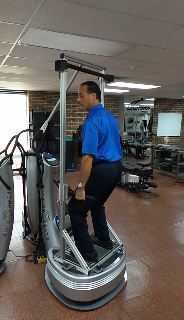 Stand straight! Don’t slouch!
Stand straight! Don’t slouch!
Perhaps, these were the nagging words you’d hear from mom whenever you felt too relaxed that you kept your neck down or leaned your head forward. It turns out that mom gave these unsolicited advice not only to keep you looking taller, but also to keep you from experiencing pain.
Physiologically speaking, poor posture is among the reasons behind physical stresses and strains. When you slouch, you lean your head and shoulders forward, which in turn may cause headaches and jaw pains. If you want to correct your posture, the first thing you need to carry out is an assessment. Here are some ways to do it.
Look at Your Reflection
Stand in front of a full-length mirror with your feet pointing forward, and place your hands on top of your pelvis. Keep the thumbs behind you and feel for the peak of the pelvis. You will know if your pelvis is somewhat misaligned if one of your shoulders is higher than the other. Look at the mirror to see the difference.
Take a Picture
Companies that provide consultancy on posture and weight loss body vibration, such as LifetimeVibe.com, advise people to take full body shots of themselves. Stand tall with the posture you’re most comfortable with. Do this for a variety of shots (front, back, and side view). Once the front views are printed, examine the symmetry of the appendages. The arms should not be hanging differently with one another, and the hips should be symmetrical. Now, examine the side views. Your head shouldn’t be leaning forward or backward.
When you’re trying to adjust your stance and you don’t feel comfortable with it, you’re likely maintaining a poor posture. If you want to correct your posture, be conscious with your standing, sitting, and sleeping habits. You may also visit a physical therapist to help you out with it.

